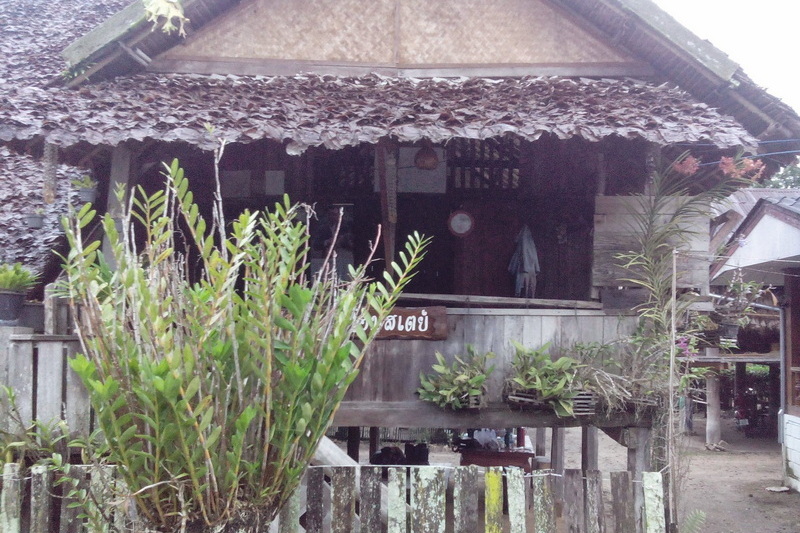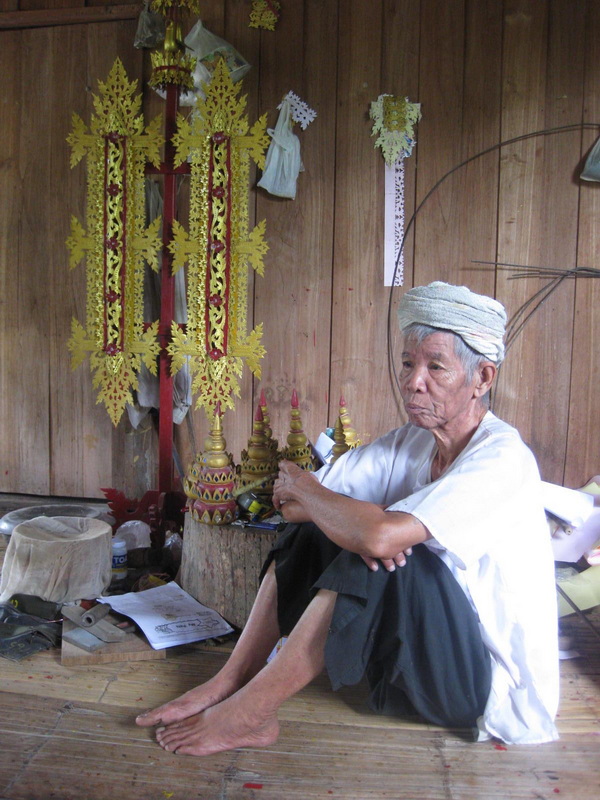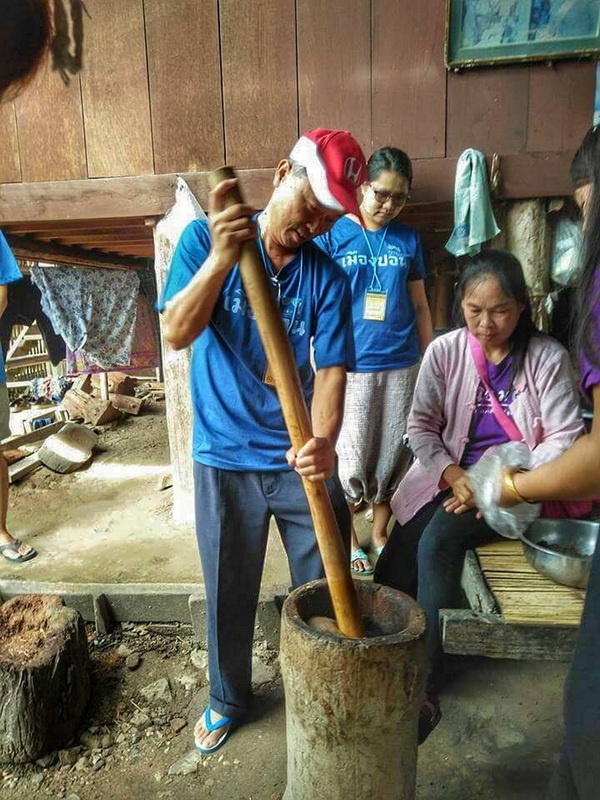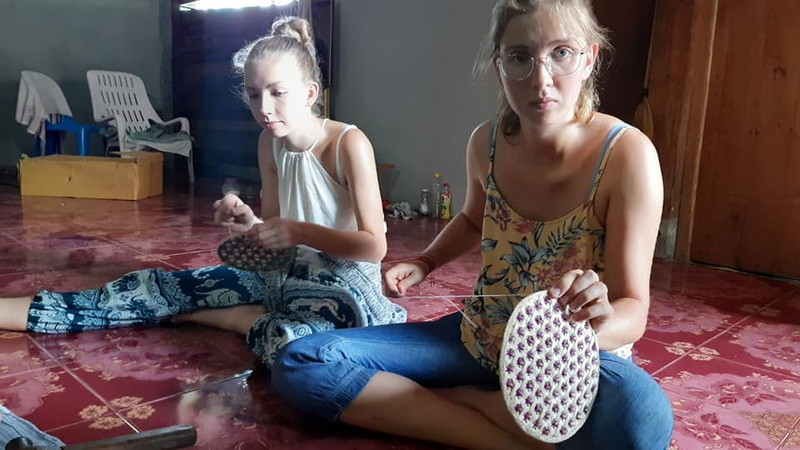Ban Muang Pon Traditional Culture and Community Wisdom

Explore the living legacy of Tai Yai culture in Ban Muang Pon, where tradition, art, and social structure thrive in harmony.
A Legacy in the Valleys: Environment and Heritage
Ban Muang Pon is a serene Tai Yai village in Khun Yuam, approximately 75 kilometers south of Mae Hong Son city, situated along the scenic lower route of the Mae Hong Son loop tour package. This village lies in a fertile valley framed by misty hills, where rice fields stretch to the horizon and traditional wooden homes blend naturally with the landscape. It’s known for preserving ancient Tai Yai architectural elements—such as stilt houses with wide balconies and bamboo walls—and for the revered Wat Muang Pon, the village’s spiritual and cultural heart. Travelers who take the loop’s southern route from Chiang Mai through Mae Sariang and Mae Hong Son city often find this village a tranquil and enriching pause before moving on to Pai or further destinations.


The People Within: Kinship and Ethnic Identity
The entire population of Ban Muang Pon consists of Tai Yai (Shan) people, an ethnic group with roots across the Shan Plateau, Northern Thailand, and Eastern Myanmar. The community here is deeply bonded by both blood and tradition, with extended families living together under one roof. This kinship-based lifestyle emphasizes elder reverence, communal responsibility, and religious participation. The Tai Yai language is spoken daily, and children are taught to read and write in both Thai and Tai scripts. Elders pass down knowledge orally—through stories, temple chants, and life rituals—ensuring that each generation inherits a clear cultural identity. Clothing remains traditional, with women wearing handwoven sarongs, bold-colored blouses, and silver adornments during festivals, while men don long cotton tunics and headscarves.
The Tai Yai People: Identity and Preservation
Tai Yai identity in Ban Muang Pon is maintained through an intricate balance of spirituality, art, and education. Unlike many minority groups facing rapid assimilation, the Tai Yai here have managed to safeguard their traditions through community-based tourism and intergenerational teaching. Their art forms—including bamboo work, ritual dance, music, and textile weaving—are practiced not only for survival but for pride. Religious life plays a central role, with most villagers active in temple ceremonies, merit-making, and festivals like Chong Para and Poi Sang Long. These events aren’t merely decorative—they serve as social mechanisms for reinforcing Tai Yai values, transmitting stories, and uniting the community.
A Way of Life Rooted in Nature and Devotion
The daily rhythm in Muang Pon village follows both the agricultural calendar and the Buddhist one. At dawn, monks make their alms rounds, welcomed by the fragrance of steamed sticky rice and herbal offerings. The men tend to rice fields, garlic gardens, and bamboo groves, while women manage households, cook intricate meals, and weave textiles with plant-dyed yarns. Community cooperation is vital—villagers help each other during planting and harvesting seasons, and temples host communal feasts and rituals. With no loud nightlife or modern distractions, life here is meditative, cyclical, and grounded in the land.


Immersive Encounters: Crafting, Cooking, and Storytelling
Visitors can immerse themselves in Tai Yai life through curated activities guided by locals. The day tour begins with a welcome at Wat Muang Pon, followed by a cultural walk through the village. Guests learn to create the Tam Khon, a sacred bamboo sculpture used in Buddhist rituals, and try their hands at weaving the traditional Goob Tai, a uniquely crafted hat worn during harvest time. Before lunch, guests are invited into a traditional home to help prepare Tai Yai dishes such as Kaeng Khae (herb curry) and Laap Tai Yai (spiced minced meat with herbs). The afternoon includes textile demonstrations, folk song sessions, and even brief Tai language lessons from local children.
Sustainable Cultural Tourism in Action
What distinguishes Ban Muang Pon is its community’s proactive effort in protecting heritage while welcoming mindful tourism. Their Mae Hong Son trekking adventure isn’t about rugged hikes, but rather slow, thoughtful walking through culture and conversation. Local artisans earn supplemental income while also teaching and preserving their crafts. The tour is intentionally limited in group size to avoid disruption, and all proceeds are reinvested into education, temple maintenance, and youth training. This is a model village for sustainable travel, where culture is not commodified but celebrated.
Future in Tradition
As global influences creep into rural Thailand, Muang Pon village responds by grounding its future in its past. The village has initiated local museums, oral history projects, and school workshops. Collaborations with Chiang Mai universities have helped document plant-based dyeing techniques and folklore. In doing so, the Tai Yai people of this village show how cultural resilience can be modern, meaningful, and inspiring.





Attractions in the Village
-
Wat Muang Pon: A revered Tai Yai temple with unique tiered roofs and a peaceful courtyard used for festivals.
-
Traditional Tai Yai House: Visit a beautifully preserved home built from teak without nails, featuring sacred altars and woven tapestries.
-
Craft Workshop: Engage with artisans who make the “Tam Khon” and “Goob Tai” using bamboo and traditional tools.
-
Textile Collective: Watch village women spin, dye, and weave fabrics with ancient patterns and locally sourced materials.
Tour Packages
Getting to Ban Muang Pon
To reach Ban Muang Pon, drive 1.5 hours south from Mae Hong Son city along Highway 108. The route offers sweeping mountain views and passes through peaceful farmlands before entering Khun Yuam district.
Nearby Attractions
Bua Tong Fields at Doi Mae U-Kho
Known for golden Mexican sunflowers that bloom across the hills in November.
Namtok Mae Surin National Park
A national treasure with a dramatic waterfall, rich biodiversity, and scenic hiking in Mae Hong Son.
Step into the soul of Tai Yai heritage—walk with wisdom, craft with heart, and let Ban Muang Pon change how you travel.


